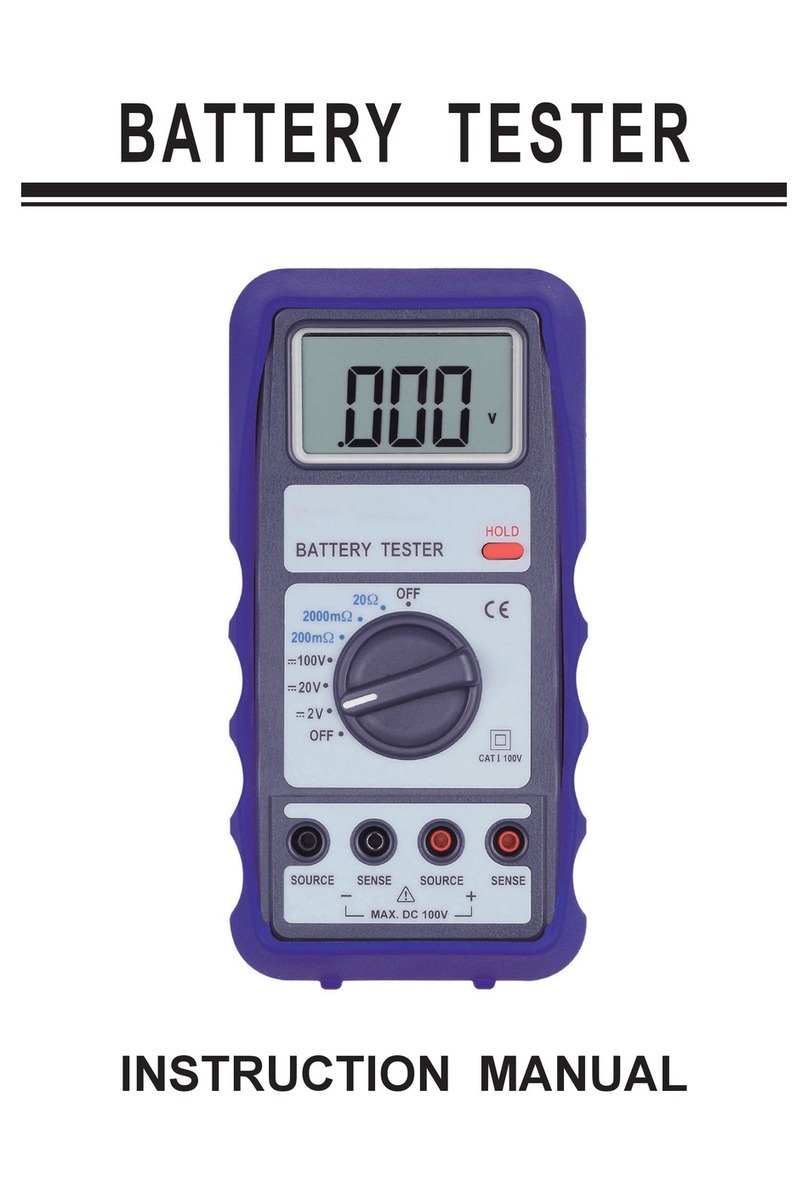
-7-
6. Measuring Methods
OPERATION CAUTION
Observe all safety precautions when you select 125V,
250V, 500V or 1000V position. Connect the meter
test leads to the circuit under test before operating
the "TEST" button. Do not touch the clip ends of the
test leads when the "TEST" button is pressed.
Some electrical equipment, especially cables, may
retain an electrical charge when disconnected from
the line. It is good practice to discharge such
equipment with grounding straps, or other suitable
devices, before touching or making connections. The
meter automatically discharge the test circuits when
the stop testing.
IMPORTANT
Remove all power to the circuit under test when
making resistance measurements.
●Always check the following before testing :
The " " indicator is not showing.
There is no visual damage to the instrument or test
leads.
● Test lead continuity : select the "Ω" range by
rotating the function switch and press "TEST"
button, short the test leads together.
An over-range "O.L" indication mean the leads are
faulty or instrument fuse is blown.




























